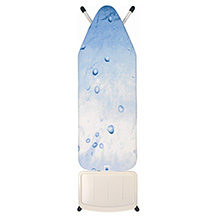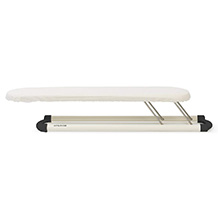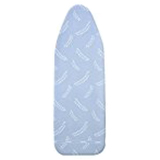Steam iron purchasing advice: how to choose the right product
- What You Need to Know
- Ironing is easier when the textiles are slightly damp. The steam has more than just a superficial effect. It penetrates the textile fabric, causes the fibers to swell slightly and thus ensures that wrinkles are quickly ironed smooth.
- Ironing with steam is particularly advantageous for thicker and sturdier fabrics such as linen or cotton.
- Important criteria when buying include the steam output, the size of the water tank, the coating of the ironing sole, the power and the range of functions.
- Extra functions such as automatic switch-off, overheating protection, eco mode and a descaling function ensure safety and a longer service life for the steam iron.
What can a steam iron do?
Ironing is one of the Germans’ least favorite household activities. A freshly ironed shirt, on the other hand, makes quite a statement. Smooth fabrics feel much more pleasant on the skin. Ironed clothing also looks neat and well-groomed. Anyone who wears ironed clothing to an official meeting also conveys that he or she shows respect for the other person. On a festive occasion, it is therefore appropriate to appear in wrinkle-free clothing. Even in some business industries, you can’t do without a suit, tie and pressed dress shirt. Or how convincing would a lawyer look in a wrinkled shirt? – Exactly!
It doesn’t help: We have to pick up the hot iron every now and then. With the right iron, we even have the opportunity to let off some steam.
What are steam irons and how do they work?
Steam irons now dominate the range of irons on the market. No wonder, because an iron with steam glides effortlessly over the laundry. The tiresome ironing is thus done quickly and at the same time with the best results.
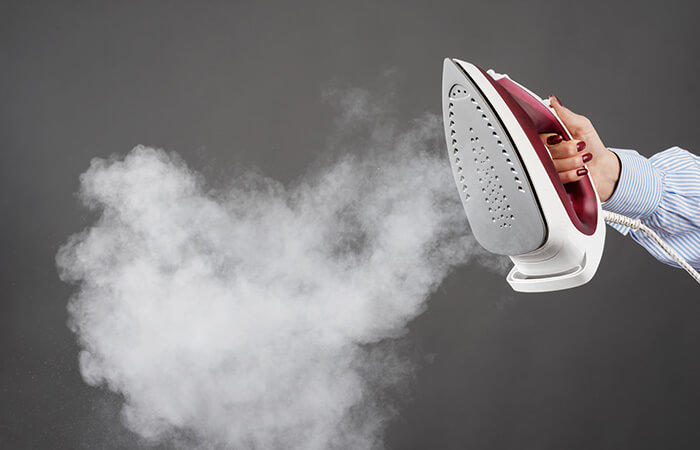
The (removable) water tank is the typical feature of the steam iron. Plastic handle and heated soleplate are, of course, just as present as in the conventional iron. The water in the tank turns into steam at a certain temperature. When ironing, this flows through small holes in the soleplate – the steam nozzles – onto the laundry at the touch of a button, slightly moistening it.
This light moisture simplifies the ironing process. The steam softens the textile fibers, making them easier to shape. The moisture evaporates through the heat of the ironing soleplate. Especially with thicker textiles, the heat can be better absorbed into the interior of the laundry by the steam. The effect: the laundry becomes beautifully smooth with little effort.
Steam ironing is only possible at a higher temperature level or at the highest temperature level, with most irons from level 3.
Advantages of the steam iron at a glance:
- Ideal for little ironing
- Takes up little space
- Fast ironing of firm and thick fabrics as well as heavily wrinkled laundry
- Low power consumption
- Reasonable price
Steam iron or steam station?
Steam iron is the most popular model on the market. Thanks to the steam mechanism, the iron with water tank effortlessly irons any suitable fabric without wrinkles in the shortest possible time. So, smoothing the laundry is done by heat, pressure on the laundry and steam. The steam iron, unlike the dry iron, delivers a very good performance even with thick fabrics and with very wrinkled laundry.
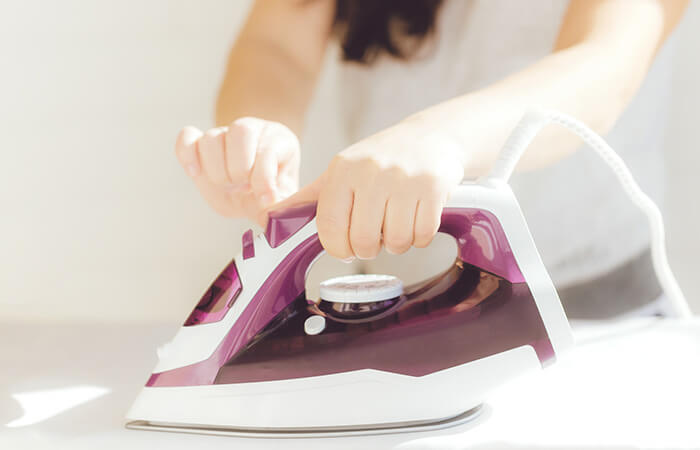
As with all household appliances that use water, steam irons are at risk of damage from limescale, especially in areas with higher water hardness levels. To avoid this, experts advise using distilled water instead of tap water. This means that additional costs may be incurred.
In terms of purchase, irons with an integrated water tank are cheaper than a steam ironing station. However, the water tank is relatively small and may need to be refilled several times for larger amounts of ironing. In addition, the steam output of about 40 grams per minute is significantly lower.
Pro Points
- Fast and effective ironing thanks to steam
- Smoothes even thicker fabrics in a short time
- Low acquisition costs
Drawbacks
- Regular descaling required
- Additional costs when using distilled water
- Among the steam irons there are different designs
Cordless steam irons with charging station and rechargeable battery
- Steam irons with only one temperature and steam combination
- Cordless steam irons, for example from Tefal or Philips, allow more freedom of movement.
As for ironing with only one temperature setting, each manufacturer has its own name for it: Philips, for example, calls it “OptimalTEMP technology”, while Braun refers to it as “iCare technology”. The highlight: the user no longer needs to presort the laundry according to its temperature sensitivity before ironing. He also no longer has to change the temperature and wait for it to adjust. Instead, he can iron the jeans directly after the silk blouse and still achieve an optimal ironing result.
The ironing station
The steam ironing station has two parts. It consists of the iron and a separate water tank with steam generator. Steam enters the iron via a hose during ironing. The external steam generator allows the user to work with steam at any temperature level. With most steam irons, this is only possible at the high temperature settings. In addition, the steam output of 120 grams per minute is much higher with the ironing station than with the steam iron. Especially thicker fabrics like jeans or linen become smooth faster as a result. However, such a device needs a lot of space. In addition, an ironing station is not quite cheap. Interested buyers should also consider maintenance: regular descaling is mandatory if you want to enjoy the device for a long time.
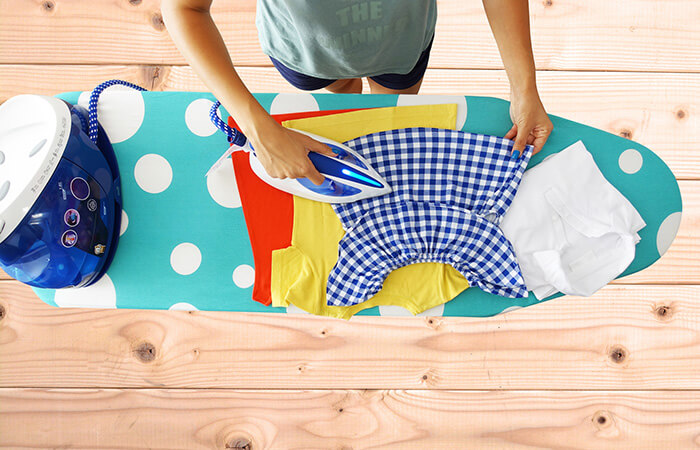
Pro Points
- Time saving
- Powerful steam pressure
- Large water tank
- Steam at all temperature levels
Drawbacks
- Unsuitable for small piles of laundry
- High initial cost
- Maintenance and descaling required
Advantages of the steam iron over a steam ironing station
When it comes to ironing with steam, the ironing station seems much more attractive at first glance. The external steam generator of the ironing station makes it possible that the user has a decent portion of steam available even at low temperatures. In addition, steam output and steam output are higher with the ironing station. A larger amount of steam is used and this flows into the laundry at a higher pressure (around 4 to 6 bar). Heavy, thick and multi-layered fabrics are thus quickly ironed smooth by the user.
Furthermore, the water tank of an ironing station is larger. The user therefore does not need to refill water as frequently.
However, these advantages come at a price. In addition, an ironing station takes up a lot of space and consumes more electricity than a steam iron. The purchase is therefore only worthwhile for consumers,
- who have large mountains of laundry to iron (frequent ironers),
- who attach great importance to perfectly smooth laundry and
- who like to iron frequently.
Those who iron little, rarely or preferably not at all are better off with a good steam iron. Compared to an ironing station, a steam iron is compact, lightweight and easier to store. The power consumption of the compact iron is much lower. This also means that the electricity costs are lower than with an ironing station.
Last but not least, a steam iron is much cheaper to buy. A good device can be purchased for around 40 euros. With a steam ironing station, the prices are usually in the three-digit range.
How do you find the best steam iron for you?
The decision has been made: you want a steam iron. Now it’s a matter of finding the right device from the wide range on offer. The mixture of functionality, handling and price must be right. The following criteria will help you make your decision:
Handling
To ensure that the ironing is done quickly, the iron should lie well in the hand. An ergonomic design is a recommendation here. The weight of the device is also not insignificant. A light iron glides over the laundry as light as a feather, but it may lack the necessary pressure to smooth the laundry well. Remember, however, that the filled water tank also weighs something. A steam iron weighing about 1.2 kilograms (kg) or less is a very lightweight device. The norm is about 1.25 kg. The “heavyweights” among steam irons weigh around 1.3 kg or more. Overall, the steam iron should have a comfortable weight and a suitable size.
Continuous steam output & steam boost
Thick fabrics can only be ironed smoothly with proper pressure. The continuous steam output indicates how much steam is emitted during normal steam ironing. More is more in this case. The faster and the more steam escapes, the better the textile fibers are moistened and the easier it is to iron the laundry. Typically, the value for steam irons is between 40 and 45 grams per minute (g/min). High-quality devices manage more than 50 g/min.
For thick and firm fabrics or heavily wrinkled fabrics, there is also the spot steam burst. This function allows the user to work with more steam for a short time at the touch of a button. The average steam output is then around 120 grams per minute. However, many devices are capable of more: the best steam irons offer a steam output of 150 to 200 g/min.
Note: Do not confuse the steam output with the steam pressure. This quantity is specified in the unit bar and can only be found on steam ironing stations.
Water tank capacity
A steam iron with a large water tank can iron with steam for a longer time. However, these devices are also quite clunky and quite heavy with water filling. A common size is a volume of 300 milliliters (ml). More than 350 milliliters are rare. How long you can iron with a fill quantity also depends on how often you use the steam burst. With a high steam quantity, the tank is already empty after about 10 minutes.
Coating of the soleplate
The soleplate of the iron should be perfectly smooth and scratch-resistant. In addition, the user has a choice of three surface coatings:
- Aluminum is the most favorable material. It is strong, durable and lightweight. Compared to other steam irons, the somewhat rough aluminum soleplate does not always glide smoothly over textiles.
- Stainless steel is currently the standard design. The material is also robust and glides perfectly over the ironed laundry. However, it is quite heavy compared to aluminum.
- Ceramic ironing soles are the highest quality, but also the most expensive. The material is characterized by its hardness and scratch resistance. It is also very easy to clean thanks to a self-cleaning function. Unfortunately, it is not as impact resistant as the metals.
For longer durability and better gliding properties, manufacturers use coating materials. These have promising names such as “Durilium” or “Glissée”. In most cases, this is a coating with enamel. This material is supposed to be harder than steel. Because the coating materials hardly differ, despite the different names, users do not need to pay much attention to this criterion when deciding on the best steam iron.
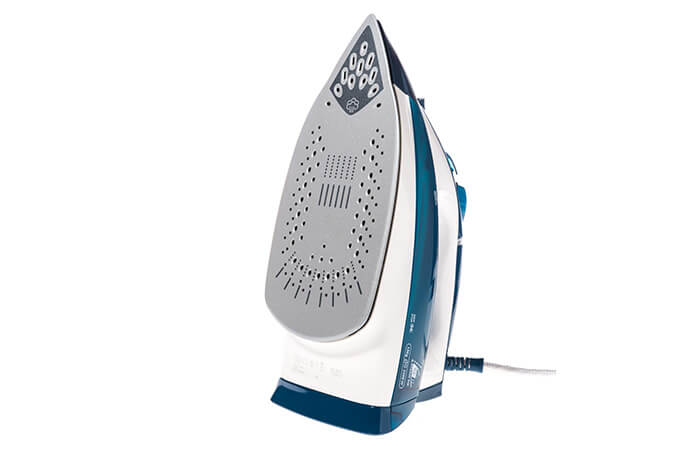
Number and arrangement of steam nozzles
Instead, it is worth looking at the arrangement of the steam nozzles on the iron soleplate. Ideally, these should be arranged so that as little steam as possible escapes to the side. However, the user can only determine this beyond doubt if he subjects the new steam iron to a practical test.
Anyone who irons a lot of shirts and blouses should make sure that the ironing tip is also equipped with steam nozzles. This equipment makes it easier to iron small areas such as shirt collars, button bands or cuffs.
Power
The power of an electrical appliance is always given in watts (W). This physical quantity describes how much electrical power the appliance absorbs in a given period of time. The power output is less. For steam irons, the value is usually between 2,400 watts and 3,000 watts. At a higher power, the iron gets hot faster and maintains temperature longer.
Note: The power has nothing to do with the temperature of the iron soleplate. This is subject to a standard. For more details, see chapter 4 under “Finding the right temperature”.
Battery or electric operation (+cable length)
In addition to the conventional steam iron with a power connection, there are also cordless irons. These models bring a charging station, in which they are regularly charged. The advantage of these models is that when ironing nowhere a cord interferes. However, if the device quickly discharges again, the ironing work drags on unnecessarily long. So, if you iron a lot, you are better off with a corded steam iron.
The cable is a point that is often overlooked when making a purchase decision. With some devices, the cable is quite short. Other devices come up with a three-meter cable. However, the most important thing is a flexible attachment of the cable. This allows the user to handle the iron without twisting the cable. Also, when putting down the (hot) iron, the power cable should not be in the way.
Extras
In addition to the basic functions presented above, most steam irons have several extras and convenience features:
ECO/Energy saving functions
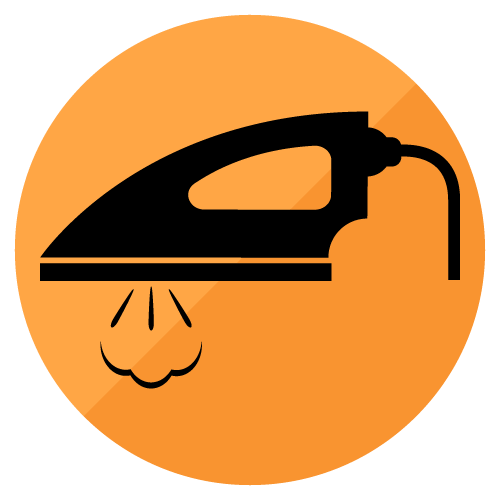
Reduced steam bursts or reduced steam production reduces the iron’s energy consumption. This process can reduce electricity consumption by about 25 to 30 percent and water consumption by about 40 percent.
Spray function
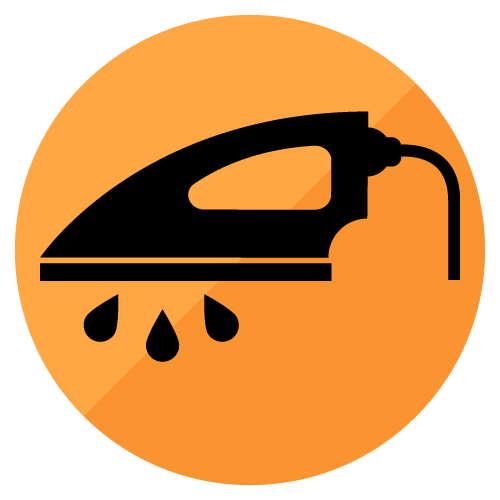
If the fabric is too dry, the user can quickly dampen it with a little water before ironing. This is also recommended for very wrinkled fabrics. Also, fabrics that do not tolerate steam can be quickly moistened during ironing.
Vertical steam
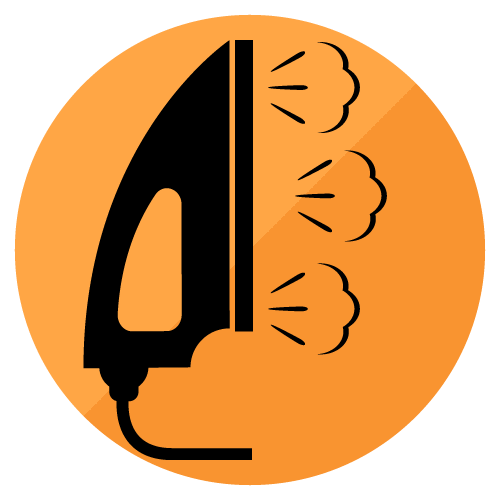
Some garments are smoothed better when they hang on the hanger. To do this, you need an iron with vertical steam. These devices emit steam even when you hold them vertically.
Automatic switch-off

This function is a recommended safety feature. If the iron is not moved for a long time, it automatically switches to stand-by mode and stops heating. Some devices go to stand-by as soon as the user takes his hand off the handle. This prevents damage to the clothes and also saves energy.
Overheating protection
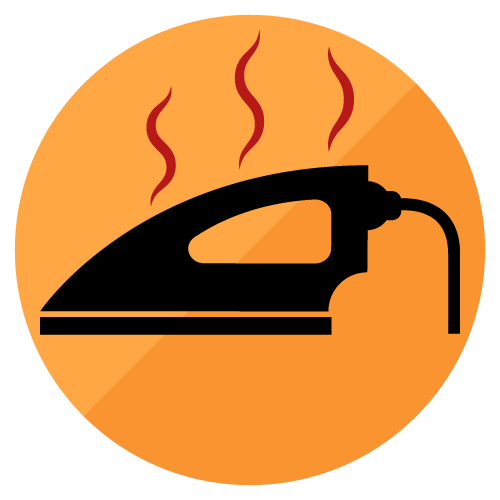
This function is also for safety. The device switches off before the temperature rises dangerously and the ironing soleplate becomes too hot. If you do forget to turn off the iron, the overheat protection prevents a possible fire.
Self-cleaning & descaling

Limescale builds up in the steam nozzles after some time. By pressing a button, the nozzles clean themselves. Some models, for example from Braun, Tefal or Rowenta, have an anti-scale function. This prevents limescale from accumulating in the appliance.
Drip stop

When the steam iron with activated steam function cools down a bit, there is a risk of condensation dripping from the nozzles onto the laundry, leaving unsightly stains.
The drip stop function prevents this.
This allows users to iron textiles at a low temperature in between without any problems.
Using steam irons – how to iron with steam
Most accidents happen in the household, and ironing also involves various sources of danger. Just handling a hot iron is not without its dangers. That’s why manufacturers like Tefal, Bosch, Siemens, Philips or AEG have equipped their products with safety features that make ironing much less dangerous. Nevertheless, when ironing, it is important to create a safe workplace to avoid injuries.
Caution, hot! – Safe handling of the hot iron
Ironing requires caution and attention. One careless movement can cause you to burn yourself on the hot iron soleplate.
Ensure that the iron is standing securely before heating it up. It should not fall off the ironing board. The table should also stand firmly and securely.
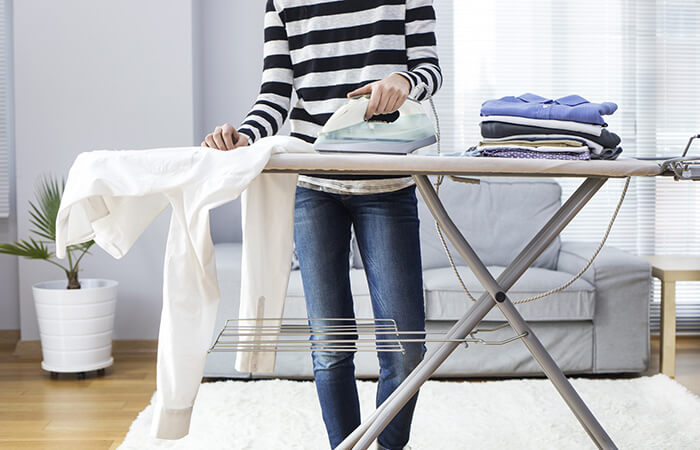
The front, pointed part of the steam iron is the hottest. So do not touch this part, otherwise there is a risk of burns. Care should also be taken when activating the steam, as contact with very hot steam can also be painful.
Attention, trip hazard! – The space around the ironing board
Make sure there is enough space around the ironing board so that you or someone else in your household doesn’t accidentally bump into the hot iron or trip over the power cord as you walk by.
Tap water or distilled water – What goes in the water tank?
The prevailing opinion is still that tap water should not be used for ironing because of its lime content, especially in areas with high water hardness (more than 14 °dH). The lime can build up in the appliance and impair the function of the steam iron. And on the ironing laundry, the conventional water from the tap leaves ugly stains. Therefore, consumers should rather use distilled water.
It is true, of course, that water containing minerals and lime is not good for electric kitchen appliances that heat water. Over time, the lime dissolved from the water accumulates in the appliance, in the water containers or on the heating rods. This affects the functionality and can cause the material to break.
However, modern steam irons today are mostly designed for the use of tap water. They have an anti-scale system that filters and collects the lime particles from the water. Thus, it prevents lime from being deposited in the device. The user only needs to take the filter out of the device and clean it every now and then.
Moreover, even distilled water is not quite as harmless as many consumers assume. It has a lower pH value than tap water (up to 5.8). This acidic water attacks stainless steel, for example. If you live in an area with very calciferous drinking water, you can mix tap water and distilled water.
A third option is ironing water, which drugstores carry in their assortment. However, these sometimes contain fragrances. This is one reason why equipment manufacturers advise against ironing water: The fragrances and soaps can harm the appliance. Another disadvantage is that the special water incurs additional costs.
Note: Check the instruction manual to find out what kind of water is suitable for the steam iron. It is also recommended to decalcify the iron regularly.
Finding the right temperature
Not every fabric can tolerate high ironing temperatures. In principle, the following applies: Sensitive textiles such as viscose, silk or synthetic fibers such as polyester only want to receive a little heat. Fabrics such as cotton or linen are ironed at the highest temperature level. More detailed information about the material and the ironing temperature can be found on the label sewn into each piece of laundry.

- The garment is suitable for ironing.
- Maximum 100 degrees Celsius. Suitable for synthetic fibres such as acrylic, nylon, polyester, polyamide or viscose. Attention: Iron without steam!
- Maximum 150 degrees Celsius. Suitable for wool or silk. Also suitable for viscose without steam.
- Maximum 220 degrees Celsius. Suitable for cotton or linen. Attention: Do not iron man-made fibres at this temperature!
- Textile must not be ironed. A fabric to which this property applies is, for example, ribbed velour.
Translated with www.DeepL.com/Translator (free version)
What temperature do I choose for blended fabrics?
Often clothing consists of several textile fibers, for example, a mixture of cotton and polyester. In this case, you go by the most sensitive fiber. In the case of a cotton/polyester blend, this would be the polyester. This would make level 1 the maximum temperature.
Sort laundry
Ironing enthusiasts also have a goal: to get through the mountain of laundry as quickly as possible. Since temperature also plays a role, it’s a good idea to approach it with a plan and a system.
- Sort the laundry by temperature before ironing.
- Then start with the textiles that tolerate little heat (level 1).
- Continue with the laundry that requires a medium temperature (level 2).
- Finally, it’s the turn of the clothes that are ironed with high heat (level 3).
In this way, you will avoid waiting times that occur when the iron has to cool down from a high to a lower level.
Ironing the different fabrics correctly
Ironing is a hot business that needs some experience. Only with practice do you know which fabric needs which temperature level and how best to “swing” the iron on different garments. We have put together a few tips for you so that ironing can be done quickly.
- Satin retains its shine when ironed if you moisten the back of the fabric with vinegar water before ironing. To do this, dip a sponge in vinegar water and dampen the fabric with it.
- Iron velvet inside out, which means you turn the inside out.
Iron inside out?
Washing clothes inside out or ironing them inside out always means turning the clothes inside out.
- Acrylic is sensitive to water. Use a low temperature (level 1) and avoid steam or a damp cloth.
- Nylon and polyester are best ironed when the fabrics are almost dry. And again, it’s best to iron inside out.
- Viscose (rayon, rayon) and acetates need a low temperature and iron best when damp. Turn garments inside out before ironing.
- You can get cotton smooth with the highest temperature setting. The fabric should still be slightly damp and – note – turned right side out this time.
- Wool should not come into contact with the soleplate to avoid shine marks. Choose a low heat setting and place a damp ironing cloth between the garment and the iron.
- Knitted wool wants to be ironed inside out and at medium temperature (lukewarm). The textile fibers should already be almost dry.
- Linen can tolerate the high heat setting. Iron the solid fabric when it is still slightly damp.
- Ribbed velour should not be ironed at all.
Cleaning and descaling the steam iron
After ironing, you should empty the water tank. This will reduce the limescale build-up in the appliance. Limescale deposits do not only occur in the water tank. Steam ironing at high temperature leaves limescale traces in the steam nozzles and on the iron soleplate. You should therefore clean your steam iron at regular intervals. This is the only way to enjoy the household appliance for a long time.
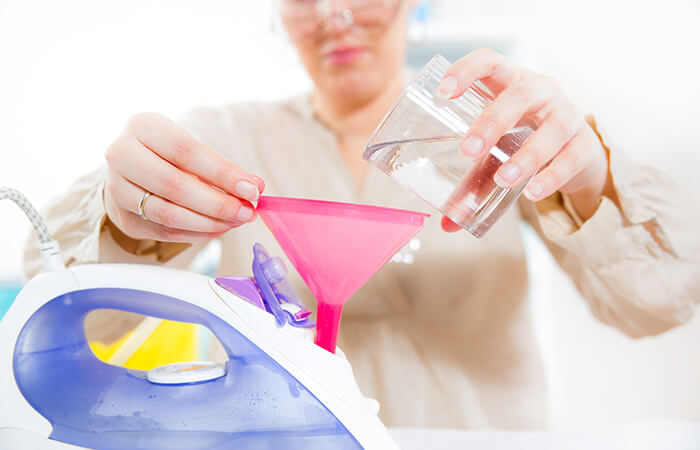
Descaling the steam iron – this is how it’s done
Preparation: You need a descaler, either in powder or liquid form. Powder descaler you dissolve in water according to the manufacturer’s instructions.
The iron should be disconnected from the power supply:
- Empty the water tank of the steam iron completely.
- Fill the descaling solution into the tank.
- Now insert the power plug into the socket, select the highest temperature level and let the iron heat up.
- Either the iron will now emit steam bursts automatically or you will have to activate the steam function separately. If the device offers several steam programs, then activate all of them one after the other so that the descaling solution gets into all nozzles.
- Now switch the steam iron off again. Leave the descaler to work for about ten minutes.
- Then repeat the process with the heating and steam output. This should cause the lime deposits and dirt to come out of the openings in the soleplate. Repeat the heating and steam procedure until no more limescale is flushed out.
Rinse: After descaling the steam nozzles and water tank, you must rinse the appliance thoroughly once again. This will remove the residue of the descaling solution. So, empty the water tank again and rinse it with water about two to three times. After that, the steam iron is ready for the next use.
The exact descaling procedure differs from manufacturer to manufacturer, but also within a brand. Therefore, be sure to check the operating instructions for your iron.

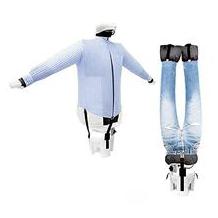
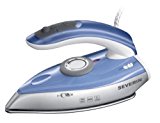
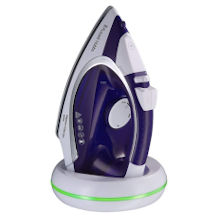
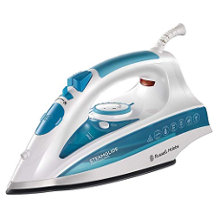
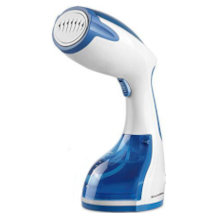
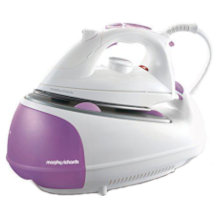


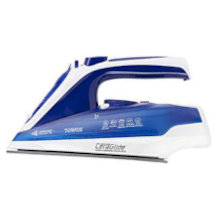


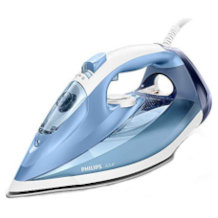
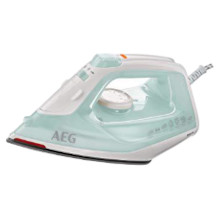



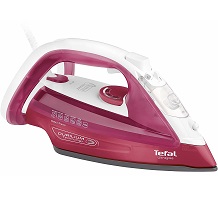

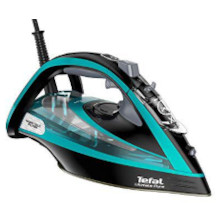
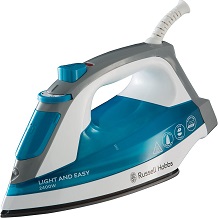





 16,162 reviews
16,162 reviews

